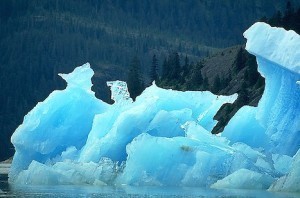Iceberg Dimensions
An iceberg is defined as a big piece of freshwater ice that broke off from an ice  shelf or glacier. It is commonly found in the open water. After some time, it can freeze and become pack ice. It may also rest in the shallow parts of the seabed, which can later turn into ice islands or ice scours. It is classified into various types depending on shape and size. In addition to these all-important facts, it is also interesting to find out the different iceberg dimensions.
shelf or glacier. It is commonly found in the open water. After some time, it can freeze and become pack ice. It may also rest in the shallow parts of the seabed, which can later turn into ice islands or ice scours. It is classified into various types depending on shape and size. In addition to these all-important facts, it is also interesting to find out the different iceberg dimensions.
The Dimensions of Icebergs
The size classifications of icebergs were set by the organization called the International Ice Patrol, which is responsible for monitoring the existence of bergs in the northern parts of the Atlantic Ocean. A ‘growler’ is smaller than 3.3 feet or 1 meter, while its length is less than 16 feet or 5 meters. Meanwhile, a ‘bergy bit’ is bigger, with a height ranging from 3.3 to 16 feet or 1 to 5 meters. In terms of length, this type of iceberg covers 16 to 49 feet or 5 to 15 meters.
The third classification of icebergs is called ‘small,’ the height of which ranges from 16 to 49 feet or 5 to 15 meters, while the length measures 49 to 200 feet or 15 to 60 meters. Next is ‘medium,’ which measures 49 to 150 feet or 15 to 45 meters high and 200 to 390 feet or 60 to 120 meters long. The second to the last classification is labeled ‘large,’ each of which measures 150 to 250 feet or 45 to 75 meters high and 390 to 660 feet or 120 to 200 meters long. The biggest classification of icebergs is called ‘very large,’ the height of which is more than 250 feet or 75 meters while the length is more than 660 feet or 200 meters.
Additional Facts and Other Interesting Details
Aside from using size to classify the various types of icebergs, it is also possible to classify them through their shapes. The two main forms are the non-tabular and tabular. Non-tabular bergs are further classified into blocky, dry-dock, wedge, pinnacle and dome. Meanwhile, a tabular berg looks similar to a plateau, which features a flat top and steep sides.
The United States National Ice Center is responsible for monitoring the icebergs all over the world. Founded in 1995, this organization offers forecasts and analyses of the different ice conditions in the Chesapeake Bay, Great Lakes, Antarctica as well as Arctic regions. The biggest berg recorded was the Iceberg B15, which measured approximately 11,000 square kilometers.





